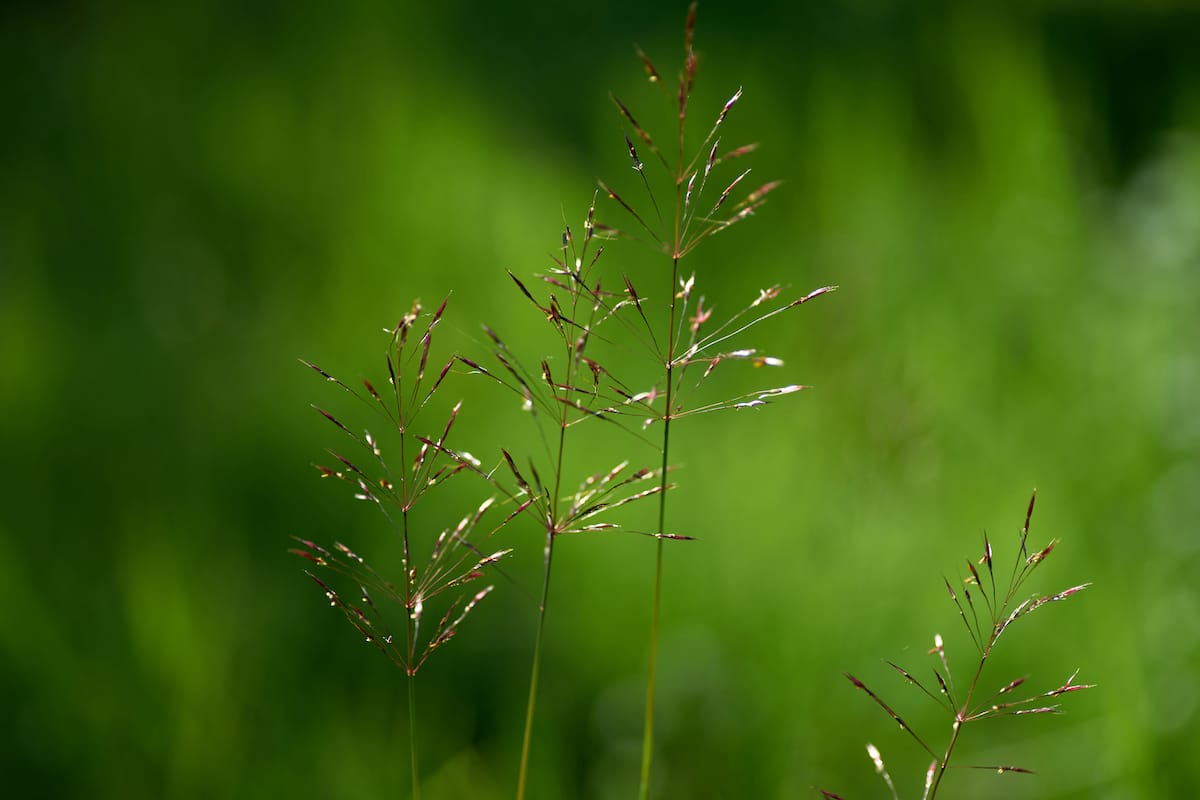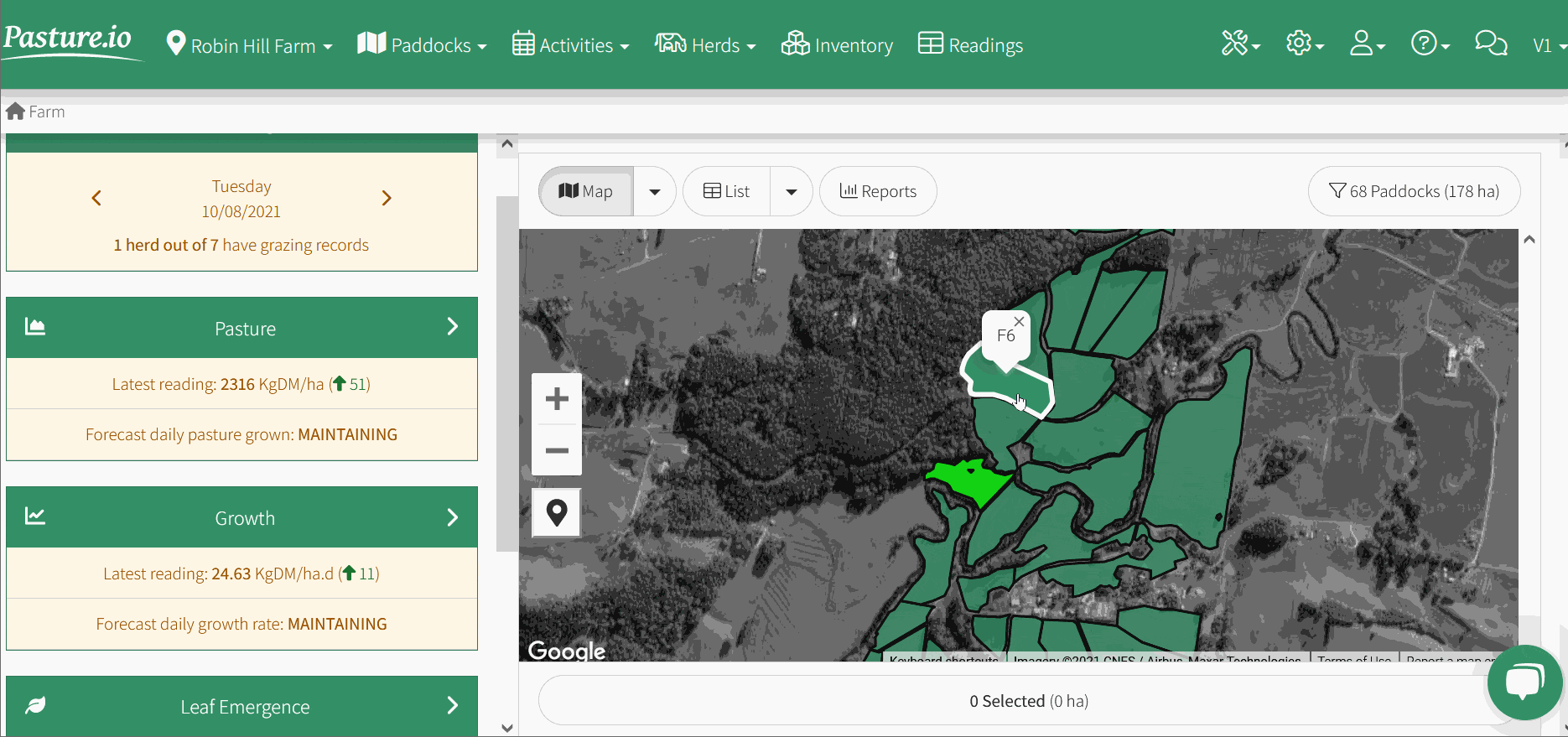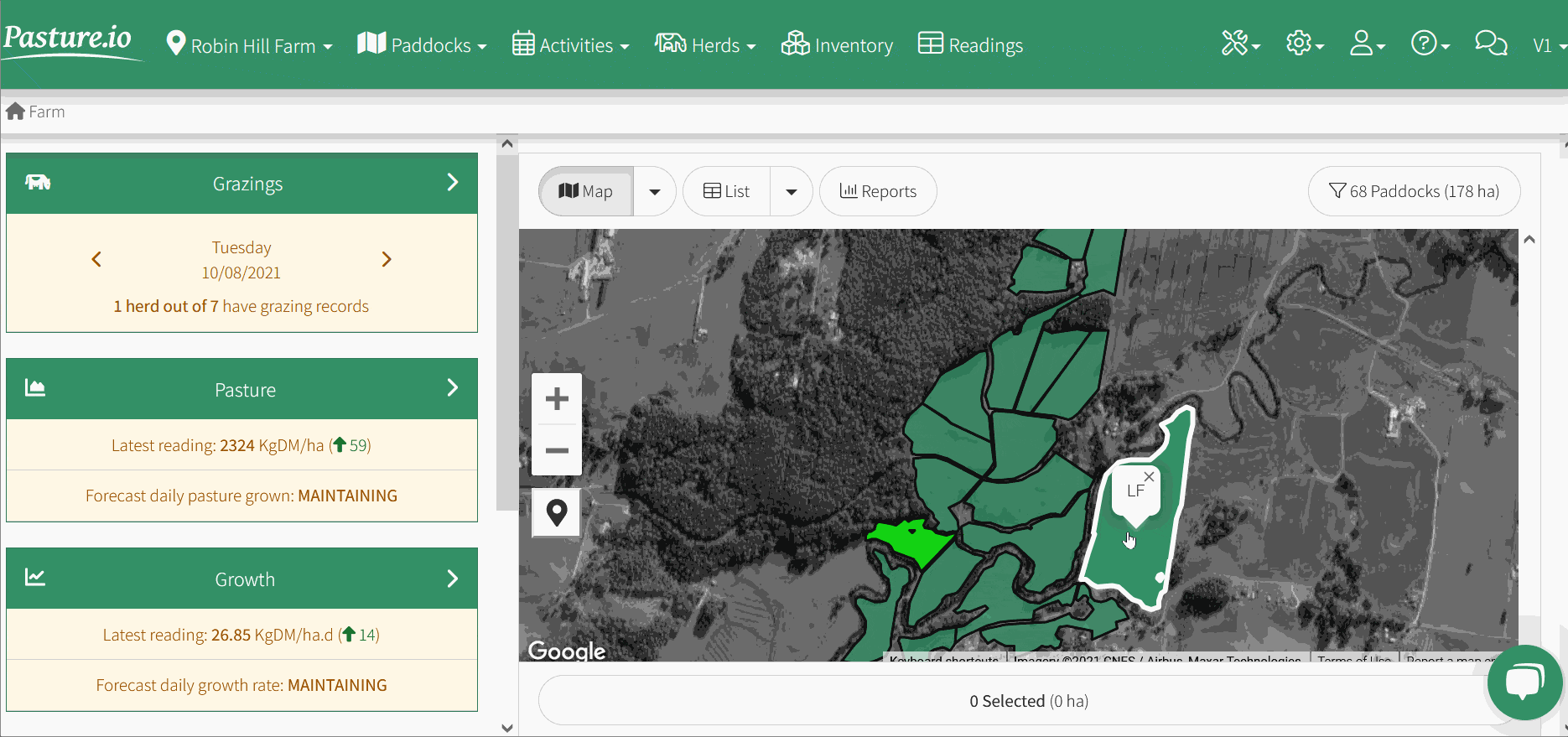Why should you update your grazing records frequently?
Your grazing choices are the single most significant factor that impacts the productivity of your pasture.
Yes, other factors such as soil moisture, fertility and the right kind of pasture species are essential and play a massive role in maintaining productive pastures. But even when you get all of these factors right, ineffective grazing choices can lead to inadequate production and pasture outcomes.
Think about it, on average, a 200-hectare livestock farm with around 300 cattle will graze each paddock about 8 to 12 times across a year. But even one poor grazing event, either overgrazing or under-grazing, can set back the next 2 or 3 grazings. And this can have a cascading effect season upon season.
Under-grazing your pastures lead to two problems.

Firstly, because there’s so much herbage to choose from, your livestock may selectively graze the more palatable grasses and leave the more mature and unpalatable grasses. This practice skews your pasture, favouring the poor quality, unpalatable and mature grasses that then take over. Over time, your pasture quality degrades. Thus, forcing you to reseed entire fields or paddocks with more palatable and nutritious grass species.
Secondly, under-grazing allows more grass to flower and set seed. While setting seed, the grass stems thicken with lignin. This process makes the stem tough to break. So, cows don’t eat these thick stems in the next rotation. Also, while setting seed, grasses shed many leaves that get trapped among other grasses and eventually rots away. So, both thick stems and falling leaves lead to wastage.
On the other hand, overgrazing can lead to even more significant problems.

Over-grazed grasses won’t have the necessary root systems and carbohydrate reserves to quickly regrow and recover from a grazing event. So, over-grazed pasture paddocks recover and regrow more slowly. Thus, leading to low annual pasture yields and poor production outcomes. Even worse, repeated over-grazing can lead to bald patches of exposed soil, which in turn get washed away with rain—leading to loss of fertile topsoil and nutrients. In turn, this results in poor quality pastures.
To avoid under-grazing and over-grazing, you need to keep your pasture species within its most productive window of growth. This period of growth is usually around the 1,500 to 3,000 Kg DM per hectare cover level.
There is only one way to practically ensure that your pastures stay within this window of productive growth.
Ensure that you graze your livestock only when a paddock has a pre-grazing cover of at least 3,000 Kg DM/ha. However, you must make sure you rotate them to another paddock once the post-grazing residuals reach no lower than 1,500 Kg DM/ ha.
Entering grazing records frequently can help you better understand your grazing needs. In addition, it can help you identify under-grazing and over-grazing events.
Records can also help you identify a) pasture shortage periods that need to be supplemented with fodder and b) pasture surplus periods to make and store more silage.
So, it is important to update your grazing records frequently if you want to be on top of your grazing game.
Enter your grazing records effortlessly in Pasture.io:
Okay, you already know that you need to update your grazing records.
But running a livestock farm can throw up many unforeseen challenges. For example, an emergency calving or a broken irrigation pipe can hit you out of nowhere. And next thing you’re sucked into fixing it.
Also, sometimes it just gets plain busy on the farm.
I know because our founder grew up on a third-generation family-owned and operated a dairy farm in Australia.
That’s why he built Pasture.io, a free platform to help you manage all your farm records and a paid service that sends you automatic pasture growth rates, every day.
We’ve made it simple for you to enter your grazing records on our platform.
Here’s a quick video to show you how you can quickly enter grazings from your phone.
You can sign-up for our free platform here. We’ll help you set up your farm map, complete with paddock sub-divisions.
So, once you log in to your account, you’ll see the farm map divided into paddocks.
If you know which paddock you want your herd to graze, you can select a paddock from your map and enter a grazing record.

You can choose the correct start and end dates. If you have more than one herd, you can select the right herd to graze this paddock. Lastly, you can also choose between a day, a night or both day and night feed slots.
You can enter a new grazing record from your phone, tablet or computer. Our platform will automatically update the changes across all your devices.
Sometimes, we all can’t update our grazing records daily. That’s why on Pasture.io you can enter multiple grazing records at once.
Plan and enter multiple grazing records on Pasture.io:
Say, for example, you want a herd to graze a particular paddock over many days.
Instead of entering a grazing event in the same paddock day after day, you can simply select a start and end date as needed.
By default, when you enter a grazing record, Pasture.io will assume it is for only a day. So the start and end dates will be the same unless you change them to reflect a grazing event across more than one day.
Here’s a quick video that shows how you can enter a grazing record over multiple days in Pasture.io.
On the other hand, you can also select and deselect multiple paddocks. To select numerous paddocks, simply hold down your shift button and select all the paddocks you want. Then, again, hold down the shift button and click on the chosen paddocks to deselect them to deselect multiple paddocks.

As you can see, Pasture.io gives you the flexibility to plan your grazing events across multiple paddocks and several days.
But there’s more to what Pasture.io can help you do. Chat to Pasture.io today to learn more about how Pasture.io can help you earn more profits from your pasture.
And if you’re interested in nailing your pasture Management , we’ll also be happy to show you a free demo of how our platform works.
Until we meet again, Happy Farming!
- The Dedicated Team of Pasture.io, 2021-07-21